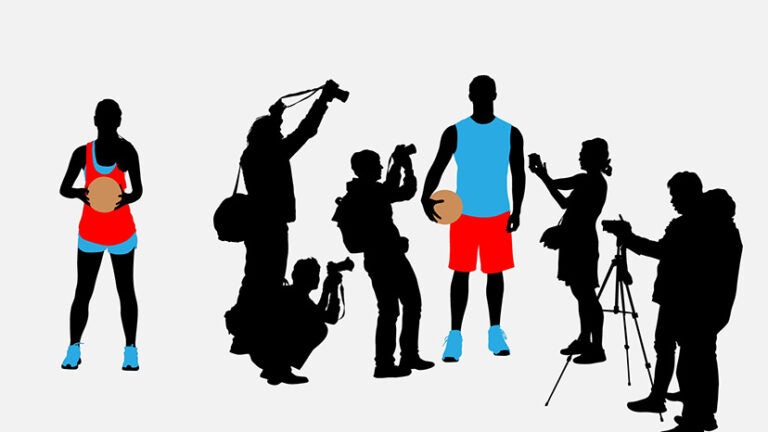
News media still pressing the mute button on women’s sports
The talented athletes are there. The cheering fans are there. But the media? Nowhere to be found.
This is the reality of women’s sports, which continue to be almost entirely excluded from television news and sports highlights shows, according to a USC-Purdue University study published Wednesday in Communication & Sport.
The survey of men’s and women’s sports news coverage has been conducted every five years since 1989. In the latest study, researchers found that 95% of total television coverage as well as the ESPN highlights show SportsCenter focused on men’s sports in 2019. They saw a similar lopsidedness in social media posts and in online sports newsletters coverage, which were included in the report for the first time since researchers began gathering data three decades ago.
‘One and done’: why media coverage matters
The study documented a few bright spots for women’s sports, including increasing live televised coverage and prominent news outlets like the Los Angeles Times devoting more resources to women’s sports.
But the coverage of women’s sports hasn’t increased in terms of television news and highlights shows, said report author Michael Messner, professor of sociology and gender studies at the USC Dornsife College of Letters, Arts and Sciences.
“News media focus on the ‘big three’ men’s sports — football, basketball and baseball — creating audience knowledge about and excitement for the same sporting events over and over,” explained Messner.
“Meanwhile, women’s sports continue to get short shrift, which is significant when you consider the larger picture of girls’ and women’s efforts to achieve equal opportunities, resources, pay and respect in sports.”
Messner and study co-author Cheryl Cooky of Purdue say this “missing piece” of media coverage is stunting the growth of audience interest in and excitement for women’s sports.
For the first time in the study’s 30-year history, the researchers included online daily sports newsletters from networks, including NBC, CBS and ESPN and their associated Twitter accounts.
The more expansive analysis revealed only slightly more coverage of women’s sports.
TV news and highlights shows give perfunctory attention to women athletes
Messner and Cooky found that even the tiny percentage of TV news coverage devoted to women’s sports in 2019 was inflated due to a burst of coverage of the U.S. soccer team’s victory in the Women’s World Cup and to a lesser extent, the U.S. women’s tennis competitors at Wimbledon.
It isn’t just the quantity but also the quality of coverage that needs improvement, said the researchers, who have documented several dramatic shifts in the ways that women’s sports are covered.
In the 1990s, they saw coverage that routinely trivialized, insulted and sexualized women athletes. By 2014, that frame had receded and in its place was an attempt at a more “respectful” framing of women’s sports that was delivered in a “boring, inflection-free manner” the researchers call “gender-bland sexism.”
Additionally, the charitable contributions of men’s teams and athletes were frequently elevated in news and highlights shows, while women athletes’ community contributions almost never made the news. These omissions help paint women athletes with a more one-dimensional, gender-bland brush.
“Our analysis shows men’s sports are the appetizer, the main course and the dessert, and if there’s any mention of women’s sports it comes across as begrudging ‘eat your vegetables’ without the kind of bells and whistles and excitement with which they describe men’s sports and athletes,” Messner said.
Does pandemic-era WNBA enthusiasm equal a turning point?
The authors acknowledge their analysis took place before the COVID-19 pandemic temporarily forced many athletes off the courts and out of stadiums in 2020. When they returned to the airwaves, ESPN increased its investment in the Women’s National Basketball Association and tripled the number of games it aired across its networks, and the league made headlines for supporting the Black Lives Matter movement.
Could this represent a turning point for women’s sports? Messner and Cooky are skeptical.
“While the WNBA successfully capitalized on the fans’ and the media’s hunger for sports over the summer, the media’s effort to get back to what’s considered ‘normal’ may once again eclipse women athletes. It remains to be seen whether this moment in history will force the media to reimagine its coverage of women’s sports.”
More about the study
Additional authors on the study include LaToya Council of USC Dornsife and Maria Mears of Purdue University.
Primary funding for this study came through a grant from the Women’s Sports Foundation. USC Dornsife’s Center for Feminist Research and the Office of the Provost at Purdue University Additional provided additional funding.